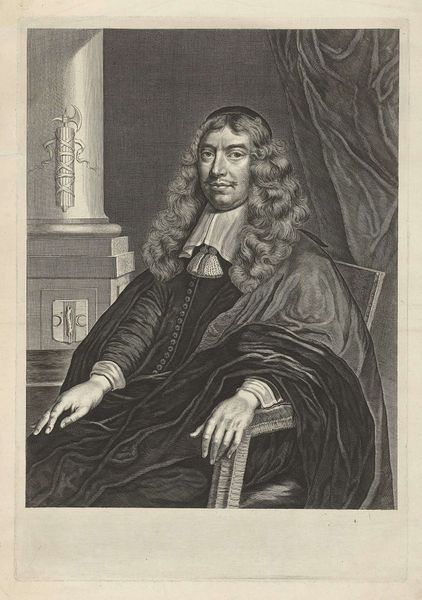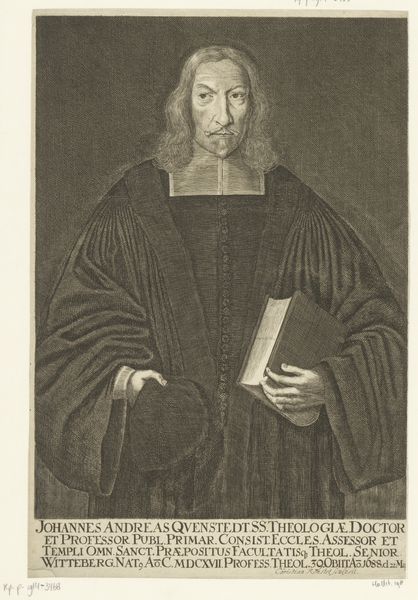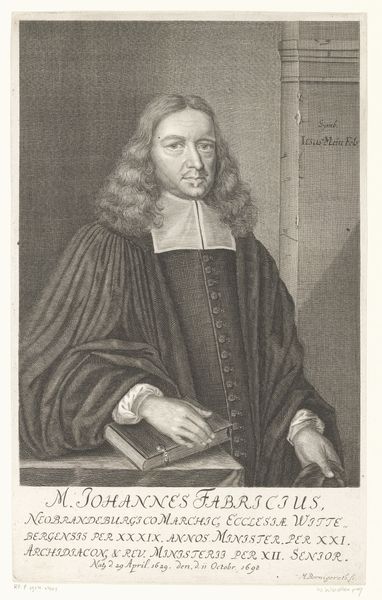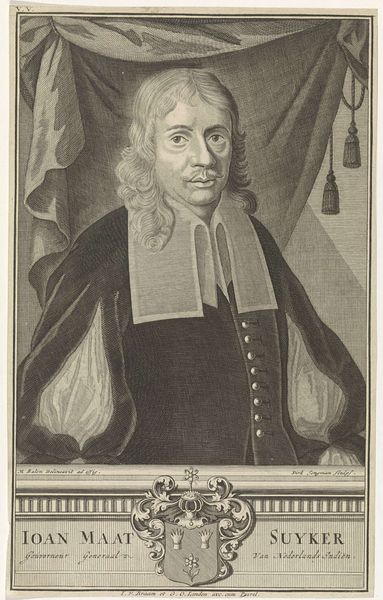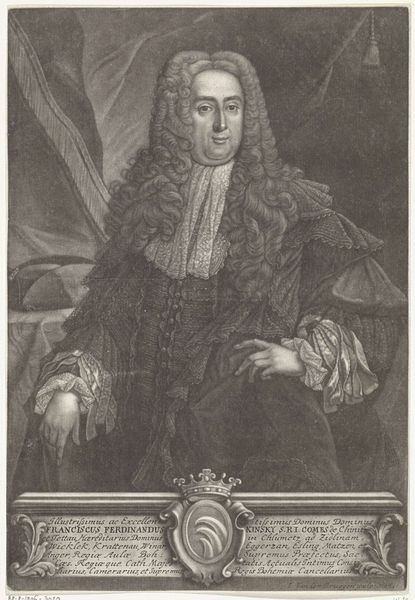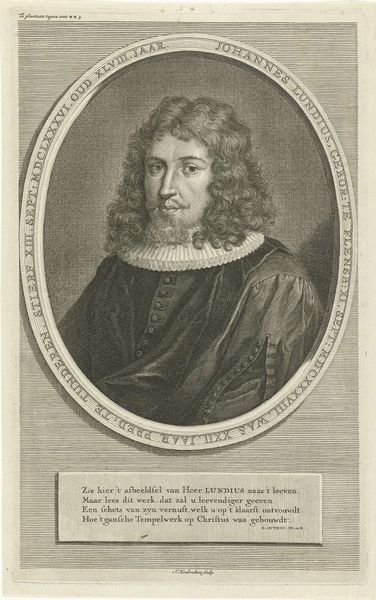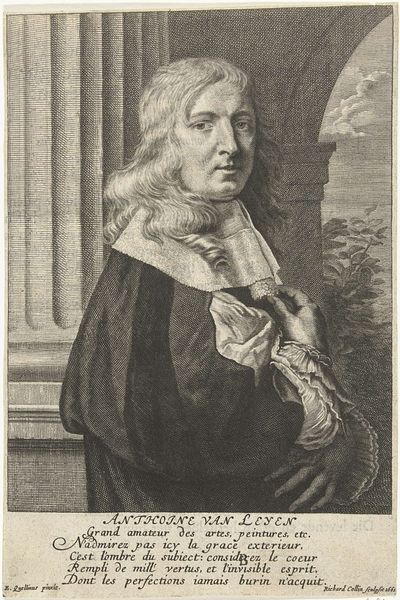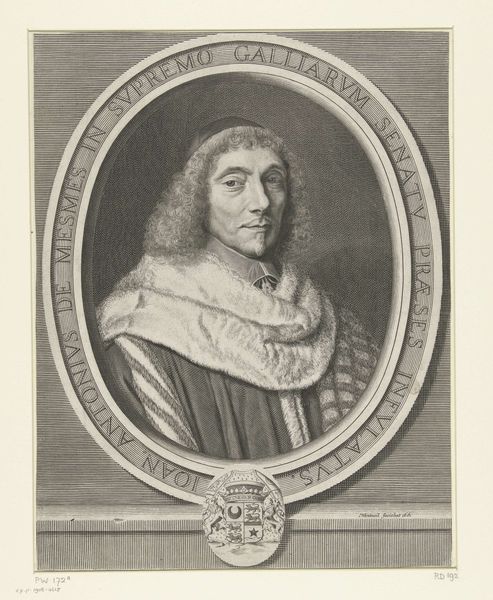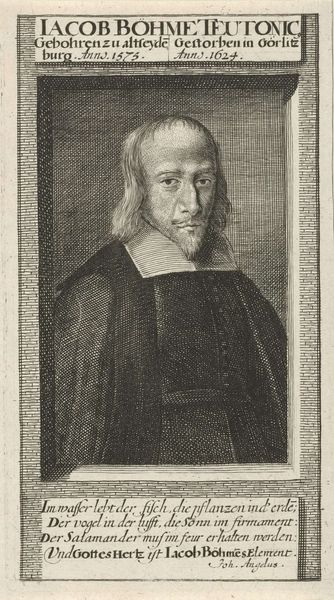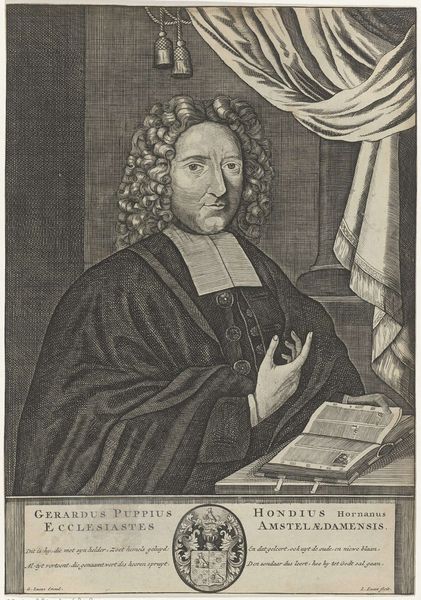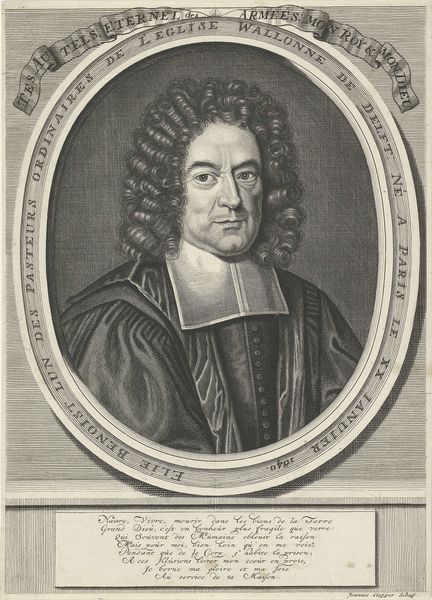
engraving
#
portrait
#
baroque
#
dutch-golden-age
#
figuration
#
academic-art
#
engraving
Dimensions: height 377 mm, width 273 mm
Copyright: Rijks Museum: Open Domain
Curator: This engraving from 1685, titled "Portret van Bernhard Oelreich," depicts a somber, studious gentleman. The artist is Anthony van Zijlvelt. Editor: Immediately, I'm struck by the detail in this piece. The textures in the fabric, the man’s ruffled collar – everything is rendered with impressive clarity given it's an engraving. It seems austere and somewhat grave. Curator: Yes, the contrast of light and shadow is particularly well executed. Look how the artist uses the density of lines to model the forms, giving depth to the subject’s face and clothing. This careful consideration of value creates a palpable sense of space. The Dutch Golden Age, especially, used portraiture to convey status. The weightiness of this presentation gives Oelreich significance. Editor: Considering the Dutch Golden Age, how much of his status is self-made versus inherited? His stern gaze reads to me like the rising merchant class—serious, pragmatic, individualistic—making claims of self-importance. How might religious or social mobility at this time affect portraiture and the sitters that it depicted? Curator: Undoubtedly, those sociopolitical elements play a part in understanding the function of this image. However, the geometric patterns are meticulously replicated through delicate hatching—observing this intricate repetition leads me back to the fundamental aspects of technique. Notice the positioning of his body in contrast to the objects behind him; the table and shelving suggest Oelreich's access to privilege in knowledge and ownership of possessions. Editor: Good point. One reading could be a quiet display of intellect, but I still sense an anxious ambition beneath the surface. Those books act as a backdrop for Oelreich, reinforcing social and economic hierarchies that he likely benefited from. What opportunities, perhaps denied to others, afforded him access to that level of scholarship? The open book suggests more than just knowledge but perhaps suggests an invitation to dispute a long accepted philosophy. Curator: It also suggests, formally, that this is a space where ideas and social standing find themselves intricately entwined. Ultimately, van Zijlvelt captures Oelreich with skill and technical accuracy, reflecting, through line and shadow, the intellectual character of the sitter. Editor: Agreed. Regardless of our conflicting interpretations, what remains indisputable is this image offers more than what the eye can grasp. Van Zijlvelt provides us an opportunity to challenge our own expectations.
Comments
No comments
Be the first to comment and join the conversation on the ultimate creative platform.
